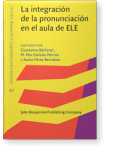Chapter 1
Léxico y pronunciación
Un camino de ida y vuelta
Conocer una unidad léxica implica ser consciente de diversos aspectos relacionados con su forma, su
significado y su uso. Uno de estos aspectos es el conocimiento de su forma oral, tanto en la dimensión receptiva como
productiva. En este capítulo ponemos de relieve que no se puede concebir un desarrollo de la competencia léxica en una
lengua adicional sin atender a cuestiones de pronunciación. A tal efecto, revisamos los fundamentos y los estudios más
relevantes que nos permiten comprender cómo el desarrollo de la conciencia fonológica incide positivamente en el
aprendizaje del léxico. De esto se desprende una serie de implicaciones pedagógicas que se materializan en una lista
de buenas prácticas docentes para integrar la pronunciación en la enseñanza del vocabulario en español como lengua
adicional.
Article outline
- 1.Introducción
- 2.El sonido: La vía de entrada de las palabras al lexicón
- 3.Aspectos de la pronunciación que facilitan o dificultan el aprendizaje de vocabulario
- 4.Buenas prácticas docentes en la integración de la pronunciación
- 5.Líneas futuras
-
Referencias bibliográficas
This content is being prepared for publication; it may be subject to changes.
Article language: Spanish
